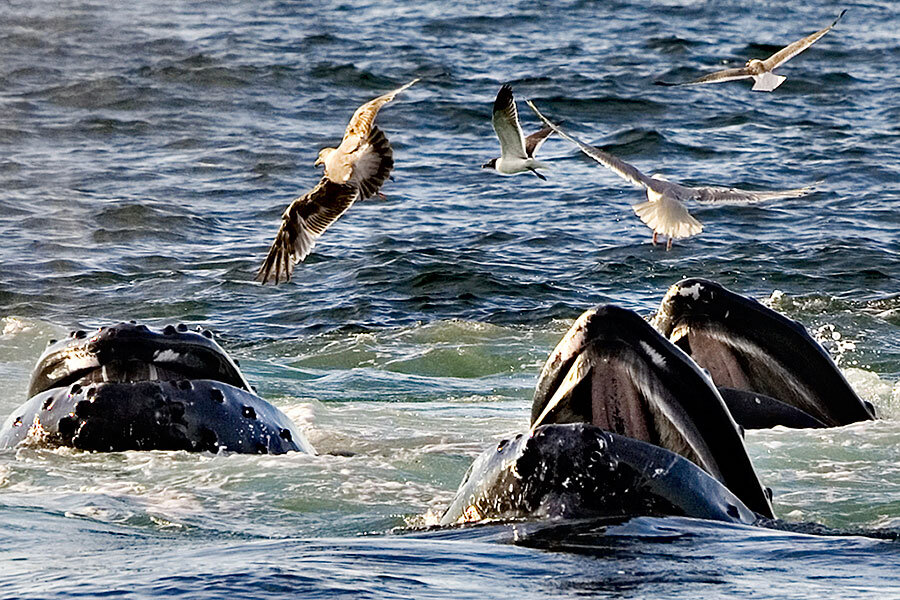Off Massachusetts, a boom in humpback whale sightings
Loading...
| Boston
Humpback whales are flooding into the coastal waters of Massachusetts this season with 20 to 30 whales spotted on every whale watching excursion out of Boston, a hefty increase over the two or three that are usually spotted.
Large numbers of an eel-like fish called the sand lance are turning the mouth of Massachusetts Bay into a "whale feeding ground," said Laura Howes of Boston Harbor Cruises.
"The past few weeks we have had exceptional whale activity," she said.
The whales have been drawn into the Stellwagen Bank, an underwater plateau about 25 miles east of Boston, because of an increasing number of sand lances, Howes said.
Each of the school bus-sized humpbacks eat about a million of the 6-inch fish per day. An estimated 900 humpback whales live in the New England region.
"But what is driving this sand lance population is one of the big mysteries," said Dave Wiley, a scientist at the Stellwagen Bank National Marine Sanctuary who has been researching the sand lance since last year, when whale-watching cruises saw a particularly slow season.
Sand lances are attracted to the Stellwagen Bank because of its sandy bottom, Wiley said, but cannot explain why there were so few there last year.
"We just don't know too much about them and we really need to," he said, adding that they are the top prey item in the southern gulf of Maine.
The last extensive paper written on the species is from the 1970s. He expects to finish up his research in a few years.
Besides humpbacks, whale-watchers have spotted minke whales, fin whales and North Atlantic right whales.
Despite the slow season, about 130,000 people went on whale watches out of Boston last year. And the Boston Harbor Cruises expects that to go up with the recent abundance of whale sightings so early in the season.
Copyright 2014 The Associated Press. All rights reserved. This material may not be published, broadcast, rewritten or redistributed.





